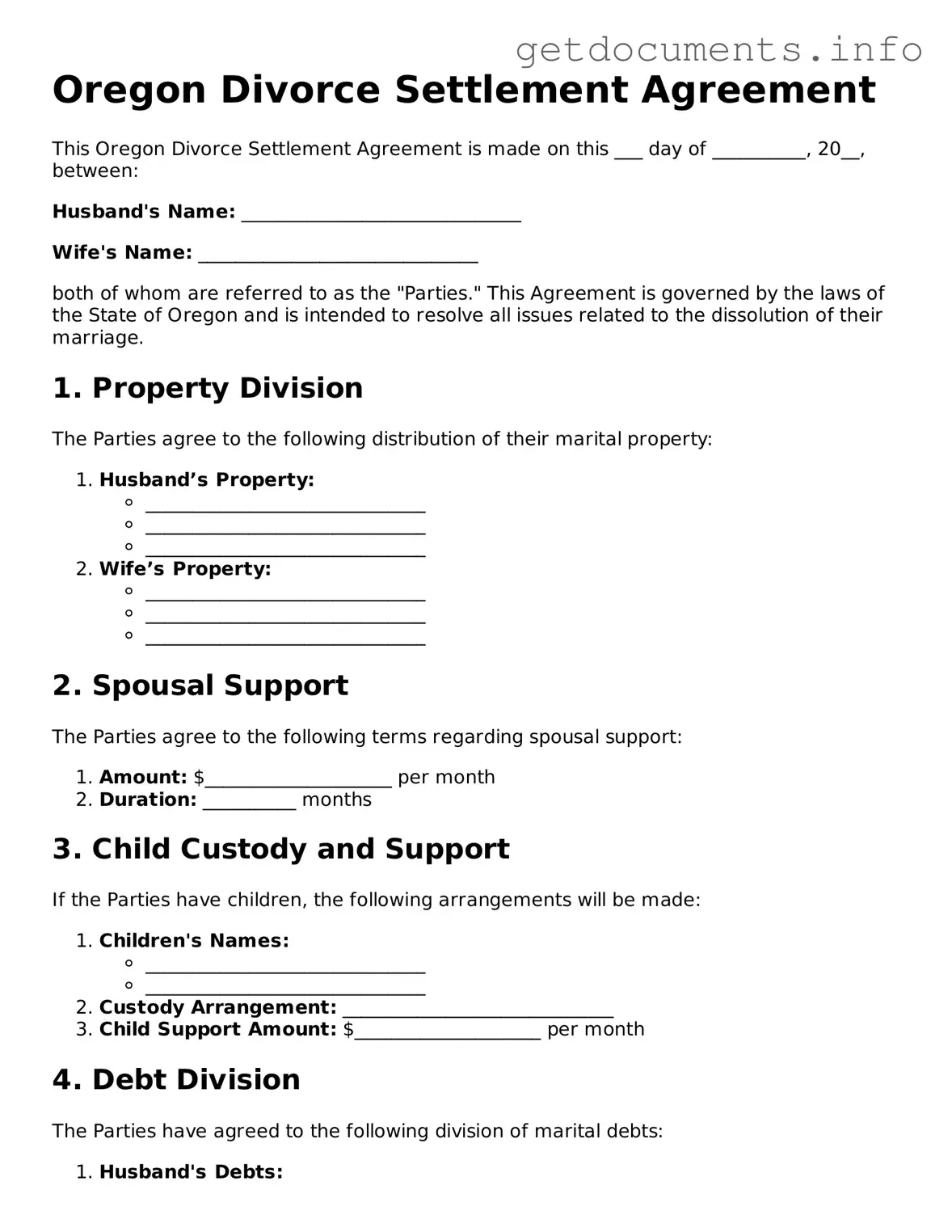Free Divorce Settlement Agreement Template for Oregon
The Oregon Divorce Settlement Agreement form is a legal document that outlines the terms of a divorce, including asset division, child custody, and support arrangements. This form serves as a crucial tool for couples to reach a mutual understanding and formalize their agreements in a clear manner. By filling out this form, you can help ensure that both parties are on the same page as they navigate this significant life transition.
Ready to take the next step? Fill out the form by clicking the button below.
Access Divorce Settlement Agreement Editor
